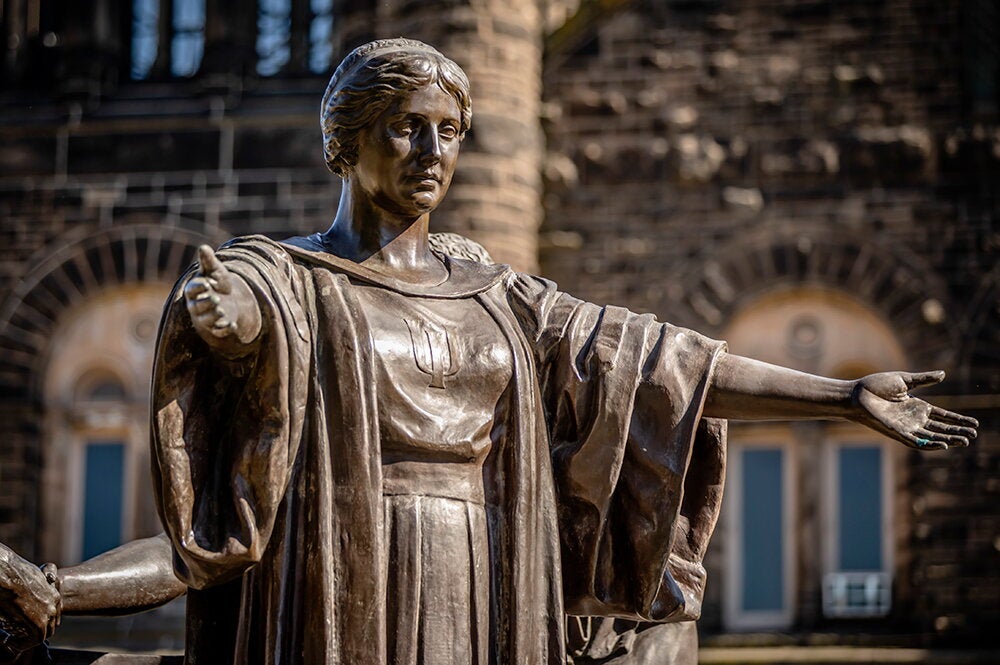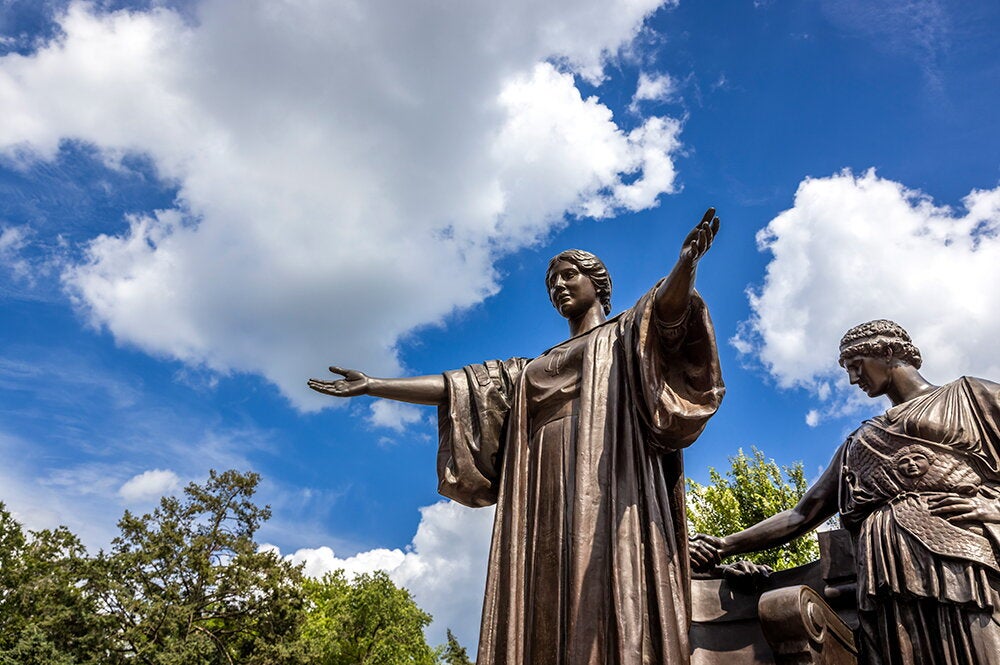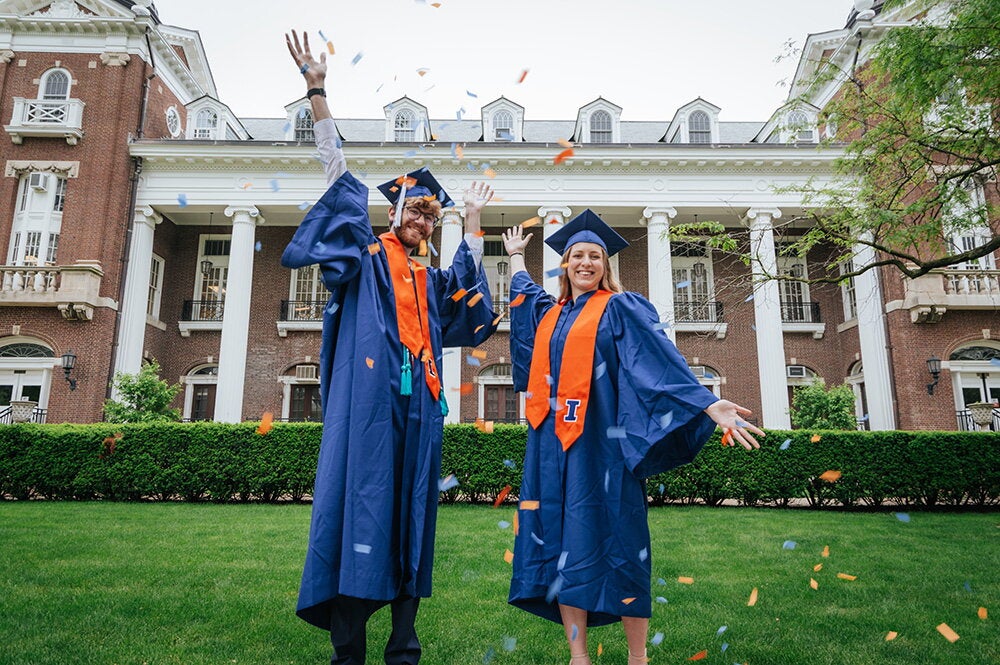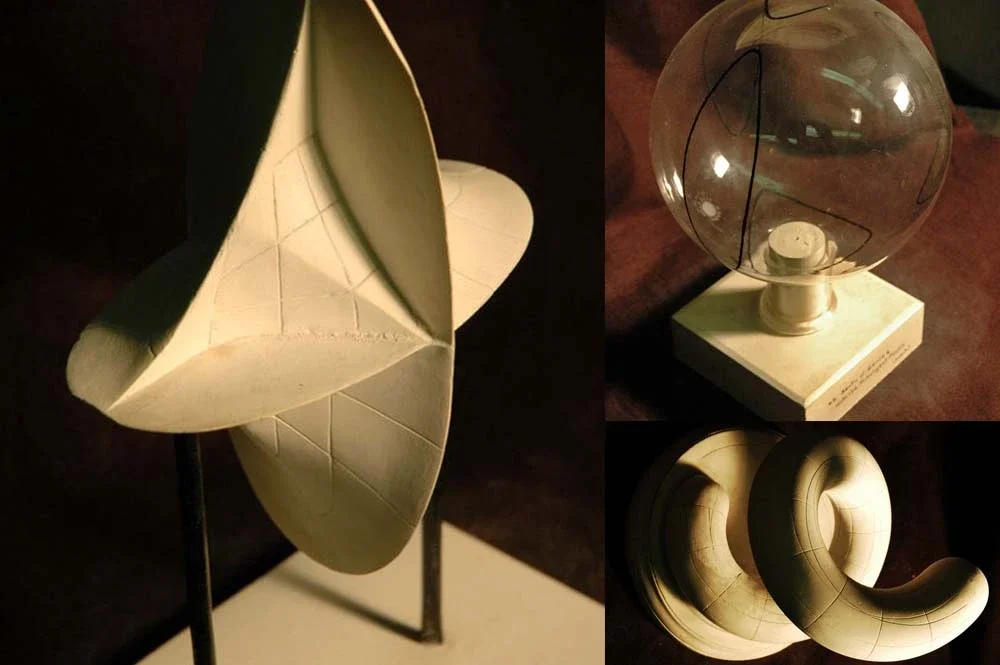
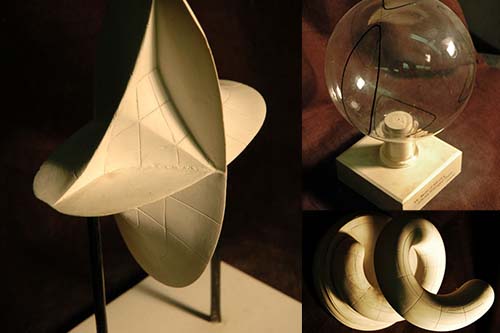
They come from a pre-digital era: a way to help students understand geometry and algebra by literally grasping the concepts in their hands. Their time has passed, but the future of more than 360 math models in Altgeld Hall wasn’t ever really in doubt until recently when campus announced that Altgeld Hall would be renovated. What would become of the beloved, somewhat bizarre collections of plaster, wood, metal, and silken threads when the building reopened?
Mathematicians specialize in numbers—and, fortunately for the models, they also love history. Faced with the question of what to do with hundreds of the iconic models, some of them well more than a century old, the Department of Mathematics created a plan to preserve some of them and put the items back on display when the Altgeld Hall renovation is complete.
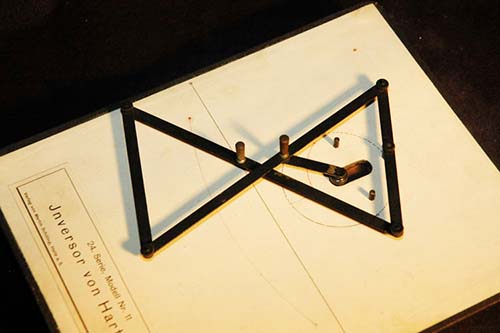
Faculty members, a graduate student teaching assistant, and undergraduate students will work together to carefully examine the models, determine which ones they want to keep, label them, and transport them to storage. They will be assisted by Christa Deacy-Quinn, senior collections manager at Spurlock Museum.
“Model collections of this sort were more common, and perhaps more prized, before the advent of modern computers which can generate fabulous virtual versions of the surfaces and other mathematical concepts that they illustrate,” said Steven Bradlow, professor of mathematics overseeing the project. “Nevertheless the real-life 3-D models still have an impact that is hard to capture any other way. They also have an undeniable aesthetic quality which appeals to many.”
Physical mathematical models were once more than just a novelty. They became popular at universities in the late 18th and early 19th centuries as a way to teach and research complex shapes and equations. Most collections were lost and diminished over time, but the collection on display at U of I is still regarded as one of the best in the world.
According to department history, the Altgeld Hall collection started in 1893 when a new math professor at U of I, Edgar Townsend, attended the Chicago World Columbian Exposition and saw math models being showcased by Felix Klein, a prominent mathematician from Germany.
“Collections of mathematical models and courses in drawing are calculated to disarm, in part at least, the hostility directed against the excessive abstractness of the university instruction," Klein said in 1893, according to a story in Wired magazine that featured U of I’s models. Klein’s models intrigued many American mathematicians, including Townsend, who went to Germany, saw its vast collections of math models, and ordered a full set when he returned to the U of I. In 1911 he commissioned Arnold Emch, a new mathematician at U of I, to produce more models that were never manufactured anywhere else.
The models have remained relatively untouched in recent years. During floor renovations in 2005 many of the models were temporarily removed from their cases. The department took advantage of their availability to create a series of more than 2,200 high resolution photographs. Now the department is embarking an even more important mission to preserve the collection; the work of preparing the models for future viewing and appreciation will begin soon.
